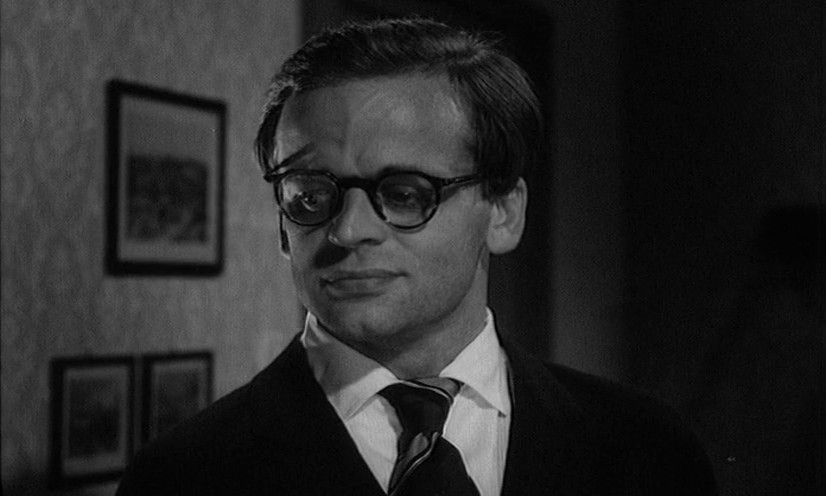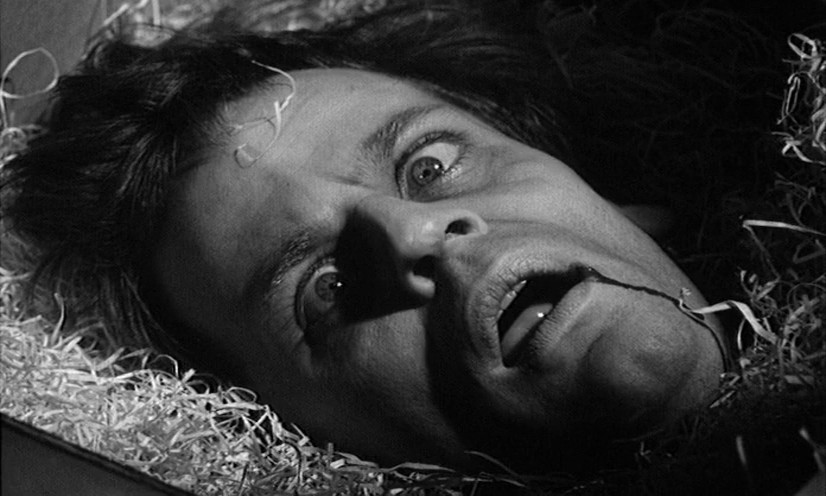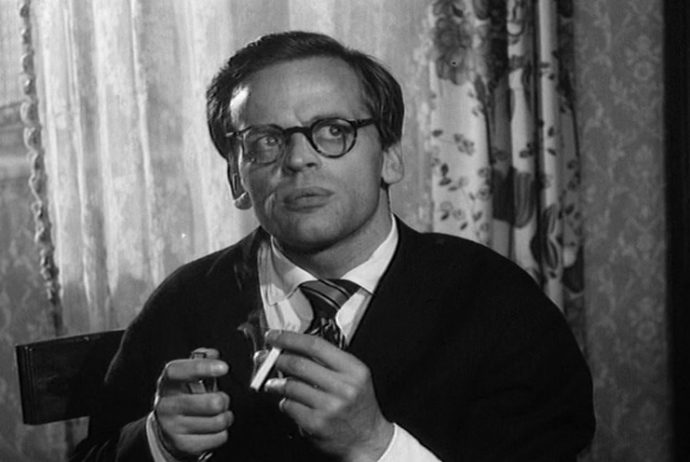Dir: Karl Anton
Star: Heinz Drache, Ina Duscha, Benno Sterzenbach, Klaus Kinski
a.k.a. The Avenger
Coming out very early in the sixties wave of Edgar Wallace adaptations, which German cinema would churn out over much of the decade, this stands out for not being produced by the usual suspects at Rialto, who made over thirty such movies. Instead, this was made by Kurt Ulrich and Heinz Willeg. It’s perhaps them we have to thank for introducing Klaus to the krimi genre, which would give him frequent employment over the next ten years. While not quite the first Wallace adaptation in the cycle – Rialto had released Der Frosch mit der Maske the previous year – it’s early enough that it was still finding its footing. Stylistically, it lacks most of what I’ve come to appreciate as staples of the genre, even if Kinski isn’t the only face in the cast that I recognize. In particular, Drache has appeared in four other films reviewed here alongside Kinski, such as The Indian Scarf (1963) and Die Tür mit den 7 Schlössern (1962).
British agent Michael Brixan (Drache) is called in to investigate a sensitive case by the Foreign Office. A man with access to classified materials had gone missing, and there are indications he may have been copying them. His head has just turned up in a cardboard box at the side of the road, apparently the latest of the 12 victims of the titular killer, who calls himself “The Benefactor”. He – for the single blow decapitations clearly rule out a feeble woman (look, it was the early sixties…) – has been killing both criminals who escaped justice and those who want to commit suicide, yet lack the will to off themselves. The trail leads to the niece of the latest victim, Ruth Sanders (Duscha), an actress currently working as an extra on a production near Windsor. Brixan goes to interrogate her, but on set finds a page from a script apparently produced by the same typewriter used by the Executioner in his notes. so sticks around to investigate further.
One aspect it shares with the standard Wallace adaptations is, there’s no shortage of suspicious and/or weird characters who may be involved. Possible candidates include two local land-owners, whose stately homes are being used as locations: Sir Gregory Penn (Sterzenbach) and Henry Longvale (Ludwig Linkmann). The former appears especially plausible, since he has a wide selection of sharp-edged weapons, and a mute, hulking servant called Bhag, who seems eminently capable of doing the decapitation thing. He also keeps a Malaysian woman locked up in a turret for his sexual pleasure. I will admit that, having seen all this, I couldn’t help but think he was simply far too obvious to be the killer. I won’t say whether or not this turned out to be the case, There’s also disgruntled lead actress Stella Mendoza (Ingrid van Bergen), who just lost her part to Ruth after complaining once too often to the director, and wants to set up her own production company.

Then there’s Klaus. He plays script reader Lorenz Voss, who is responsible for handling all the unsolicited manuscripts which get send to the production company. So he should, in theory, know where the page Brixan found came from, and who submitted it to the studio. He is curiously averse to revealing this information, and when the necessary documentation is found, the name and address has been heavily crossed out. He definitely knows more than he’s saying, and it probably doesn’t count as much of a spoiler to say that he barely makes it to the hour mark into this, and meets a bad end, at the hands of the “Benefactor.” As shown below, his severed head also turns up in a cardboard box, accompanied by a terse note saying, “This is the head of a traitor.” We discover later he tried to blackmail the perpetrator with his knowledge of their identity, only for the target to take unkindly to this extortion attempt.
Like most of the Edgar Wallace adaptations which would follow, the setting is England, though there’s very little effort made beyond some random stock footage to give the impression this was made there. Though with most of it taking place in a rural setting, and the balance in offices and other interiors, there’s not much need for any realistic scene-setting. While Drache makes a decent hero, the plotting leaves a considerable amount to be desired. The original case, of the civil servant with access to classified documents, appears almost forgotten as soon as Brixan sets eyes on Ruth, and he spends as much time wooing her as investigating the case. He has a rival there, in that Sir Gregory also has a severely wandering eye, and his Malaysian kidnappee isn’t enough. He turns his attention to Stella, but it’s Ruth he really wants, sending Bhaq out, apparently looking to add her to Gregory’s collection.
There are secret passages to discover, and the whole thing builds to a climax in an underground vault, where we see the decapitations are actually the work of a guillotine installed by the Benefactor (so much for the whole “It has to be a man to do this” sexist argument posited in the beginning). His ancestor, you see, was a renowned executioner in the French Revolution, whose resume included lopping off the head of Marie Antoinette, and so he is keeping up the family tradition. Various people are set up for an encounter with Madame Guillotine, but help arrives from an unexpected source – these “secret passages” end up known to just about everybody! The Benefactor, naturally, ends up becoming a victim of his own infernal device, and Brixan gets the girl, with Ruth’s career apparently untroubled by the whole murderous series of events. It’s all merely okay, though Kinski plays the role with understatement, even as you sense Voss is a tightly-wound spring who could be capable of questionable deeds himself. Otherwise, there’s little here to stick in the mind.

